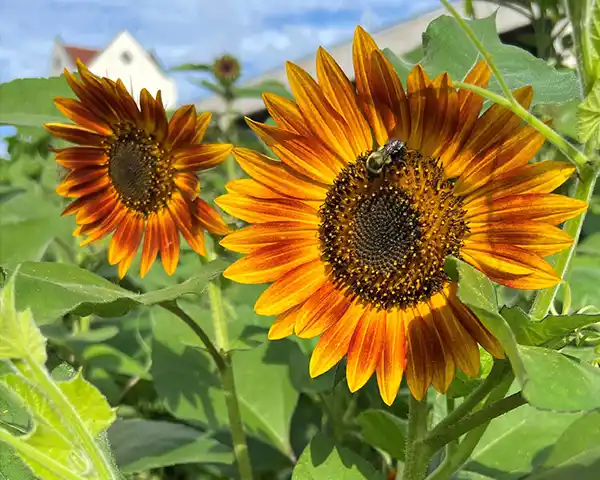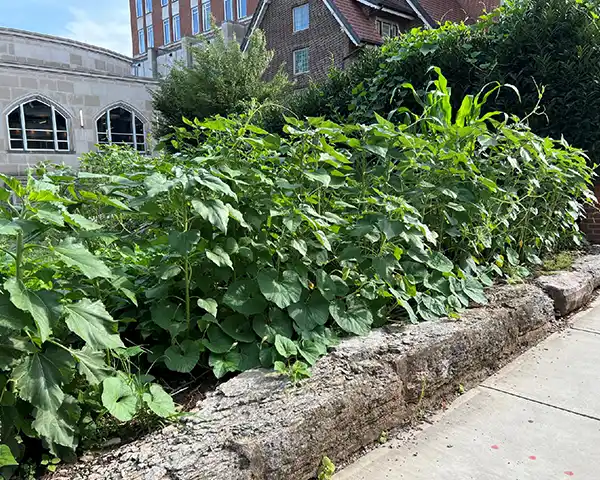Anthropology’s Southern Foodways Garden

In March 2022, Kandi Hollenbach planted a southern foodways garden in a bed adjacent to the Cottage behind Strong Hall with the assistance of students and faculty members. Kandi teaches about plants and foodways in the classroom, but photos do little justice to the vibrant energy of a living garden.
When we think of southern food, cornbread, grits, barbecue, fried green tomatoes, and fried okra come to mind. We owe these ingredients and techniques to Native Americans and enslaved Africans from the South’s colonial past. During the inaugural season of the garden, Kandi focused on plants associated with both groups.
Plants cultivated by Native Americans include sunflowers and the familiar “Three Sisters’ Garden” of corn, beans, and squash. She replaced squash with bottle gourd to limit the amount of food produced, since the chemical inputs drifting into the garden are currently unclear. Bottle gourds are the oldest cultivated crop in the Americas, dating to at least 10,000 years ago. Squashes are a close cousin, domesticated around 5,000 years ago by groups living in the Eastern Woodlands of North America. These groups also domesticated sunflowers by 4,200 years ago. Farming peoples in East Tennessee added corn to their food plots about 1,000 years ago, and beans 700 years ago, both of which were passed along routes that connected all the way to Mesoamerica.
Other plants in the garden, including okra and black-eyed peas (or cowpeas), highlight crops that enslaved Africans brought with them on their forced journey across the Atlantic. They may have also brought bottle gourds with them—plants that Africans also domesticated at least 4,000 years ago—or they may have been relieved to see bottle gourds growing locally when they arrived in the Americas. Africans and Native Americans used bottle gourds for a wide range of purposes, from containers to fishing floats to musical instruments.
Kandi and her assistants planted the garden in complementary groupings rather than orderly rows: the beans and black-eyed peas climbed up the corn stalks and okra and sunflower stems for support. Bottle gourd vines meandered at will, shading the soil to keep in moisture and outcompete weeds for sunlight. After several weeks of regular rain showers, the gourd vines were riotous and took over the whole patch!

The gardeners have learned a lot from the garden already – about the timing of plantings, sunlight requirements, responsiveness to rain, attraction of a wide range of wildlife, reduction in weeds over the course of the season as leaves and vines spread, timing of ripened pods, and harvest and drying of seeds and gourds for storage. Students in the spring 2023 paleoethnobotany class will package the seeds, along with information about their cultural uses, and distribute them to 4H groups in East Tennessee.
The students will also plant maygrass, little barley, and sochan this spring – another set of plants tended by Native Americans in this region beginning about 4,000 years ago – and develop signage for the garden. By May, they will harvest those seeds and plant the next round of crops for the summer.
If you find yourself near the corner of Cumberland Avenue and 16th Street, come by and check out what’s growing in our southern foodways garden!